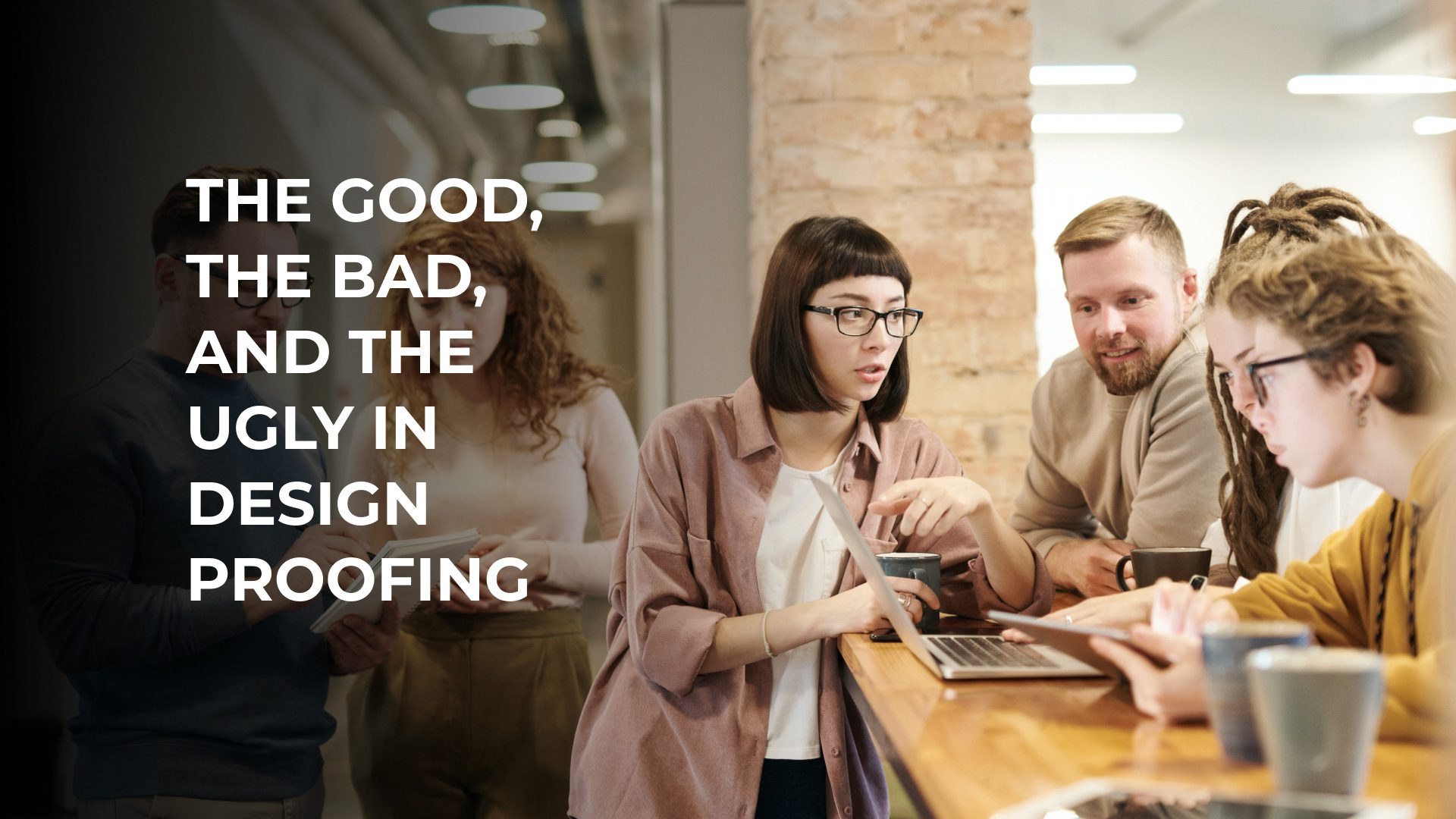Design is an exciting field that combines creativity, problem-solving, and a keen eye for aesthetics. It is a profession that often captures our imagination with its ability to shape our visual world. However, behind the scenes, the life of a designer can be more complicated than it seems at first glance. Even an ordinary trip to the store becomes stressful for the creative nature. Every time I go to a store, I no longer see shelves filled with piles of products; instead. I see hundreds of designs, and honestly, they do not always please my eye.
Suppose the buyer does not really understand what they are buying. In that case, they often choose intuitively, paying attention to the packaging, and then vote for the best design with their money. This is why I love design — this is one of the most people-first industries ever. And this is why when I see frankly terrible packaging design, one question arises: how on earth could someone approve such a thing? In my experience, much of this made me wonder about the good, the bad, and the ugly in design proofing and how it influences the final product.
Table of contents:
The Good

To begin with, the desire to innovate, explore and come up with fresh ideas is a leading positive tendency throughout human history, going beyond the goal of any project. By nurturing our creative impulses, we contribute to improving ourselves and society, making a lasting impact on the world around us.
Мore serious approach
Together with the traditional desire for the new, recognizing the importance of design approval is an up-to-date trend gaining momentum among teams and customers alike. As experience accumulates and lessons are learned through trial and error, people realize that the design approval process holds significant weight and should not be overlooked. This attention to detail and full understanding of the design approval and revision process ensure you hit the mark.
Using improvement tools
With understanding the problem comes its solution, so teams start using specific design review tools that help to optimize their approval processes, foster effective collaboration, maintain version control, and improve overall efficiency. And if you haven’t found your magic wand, we have a great option for you – Approval Studio.
Understanding the design task
Moreover, objectivity in creativity and its review is gaining popularity. In the modern world, the word “design” has become associated not only with a beautiful picture, but with its task that places the user in the center of the creative process. The design improvement and development approaches are based on user research, and data analysis is conducted to objectively understand their needs, behavior, and preferences. It helps designers create projects that meet users’ requirements, ensuring ease of use, satisfaction, and a positive experience.

If you want to make design collaboration process easier for both yourself and your client, improve your review process, and ensure all requirements are fulfilled properly at all times, Approval Studio might be a good tool for you to check out. We could offer you straightforward on-the-mockup proofing without registration on the clients side, report, comparisons, and much more!
The Bad
Subjective thinking

But not everything is so rosy. Why? Well, because there are still many people who consider design a purely subjective thing, which aims only at a good aesthetic picture that will please the owner, but at the same time does not fulfill a certain task for their brand strategy. This mistake has a bad effect on the approval of any design because, from the beginning, the understanding of its main purpose is lost.
Every designer has probably had a client who is “a bit creative themselves”, and so he/she wanted a banana on their logo because they love them, even though their company called “Nail Gun” makes and sells building materials, but who cares? While there is room for personal interpretation and subjective preferences in design, one should strive to create designs that balance subjective aesthetics with objectiv principles and goals.
Advice:
Every man is to his taste but remember that a design that works focuses on the benefit and the client, not your own beliefs. Pay attention to user experience research. Constantly consider the features and goals of the product to develop creatives that are visually appealing and effective in achieving the goal.
Poor evaluation of the process

An unrealistic assessment of the process is also a bad thing that happens too often. Not knowing how design works, many people want three options for their new banner with a detailed explanation and presentation done by 4 pm yesterday, so it may be hard to find the optimal solution. Insufficient time or resources may result in inadequate attention to detail, inspection, and correction of work. In such situations, the result suffers first, and you should not expect impressive creative solutions when people are forced to work under time pressure and therefore have fewer opportunities to implement all ideas and achieve potential success.
Advice:
To avoid an unrealistic assessment of the process, you need to have a clear understanding of project management. You can read about other common mistakes here. It is necessary to conduct a detailed analysis of the project and consider all stages of work, real terms, and resources. Value your time and use apps that make communicating, reviewing, and approving your tasks easier.
The Ugly
Unclear what to create

Customer: “I need a new logo for my cafe, but I have no idea what I want. Surprise me!”
Designer: rubs hands together. “Alright, let’s see… How about a majestic platypus wearing a monocle and a top hat, gracefully balancing a cup of coffee on its tail? It’ll exude elegance and a touch of quirkiness. A real conversation starter!”
Customer: laughs. “I never thought I’d say this, but I love it! Let’s go with the dapper platypus!”
Ah, the enigmatic world of customers with vague requests! It’s like embarking on a journey without a map or destination. At such moments, is it part of my skill to be a bit of a telepath or a god of design who understands the task literally from two words? This is an exaggerated example, and in real life, the agreement usually is not achieved so fast, if the customer does not have a formulated vision of their needs or has not fully defined their goals, it becomes difficult for designers to develop accurate and targeted design solutions. The approval process can become full of misunderstandings.
Advice:
When faced with unclear goals, it’s critical to ask questions, seek inspiration, and collaborate to gather information that will help shape the direction of the design. The client’s involvement and constant two-way communication are the key to effective cooperation. By easily keeping in touch, you can be sure that everyone has provided their vision and comments on the work and that you haven’t missed a cool idea or thought.
Unclear what to change

Sometimes, one misunderstanding leads to another, and unclear answers result from unclear requirements. The notoriously vague customer reviews are like getting a cryptic message that leaves you scratching your head. More and more different “final versions” of the project appear on your desktop. It is difficult to immediately guess which shade of blue the client wanted to change the logo or how far to move something to the right. If a creator doesn’t use design tools , it can be a big problem and make a mess because you don’t have everything gathered in one place.
Advice:
Online project management tools can be a godsend for you. They will help the client and everyone involved to provide feedback and edits clearly, and you can access the report and all files anywhere.
Conclusion

In summary, a well-planned design review and approval process are essential because it directly affects the project’s final outcome. To ensure a healthy and productive environment for high design, finding a balance and following positive trends in the work process is vital. This balance involves providing specific and constructive feedback and clearly setting project goals, constant communication, and, above all, an objective position focused on the user’s needs. After all, objectivity is 90 percent of what makes a design useful, and the other 10 percent is the subjective magic everyone loves designers for.
The Approval Studio team is confident that it can help you solve and correct common problems in the project management process, as it has a cool online validation tool that helps automate tasks, reduce errors, and make your creative journey more efficient and easier.
Therefore, avoid becoming a part of bad trends; use the right online apps and be sure that your final product will be of high quality or even exceed your expectations!

 TEAM SOLUTIONS
TEAM SOLUTIONS WORKFLOW SOLUTIONS
WORKFLOW SOLUTIONS



 REVIEW TOOL
REVIEW TOOL PROJECT MANAGEMENT
PROJECT MANAGEMENT TOOLS & INTEGRATIONS
TOOLS & INTEGRATIONS
 CLIENT INTERVIEWS
CLIENT INTERVIEWS









